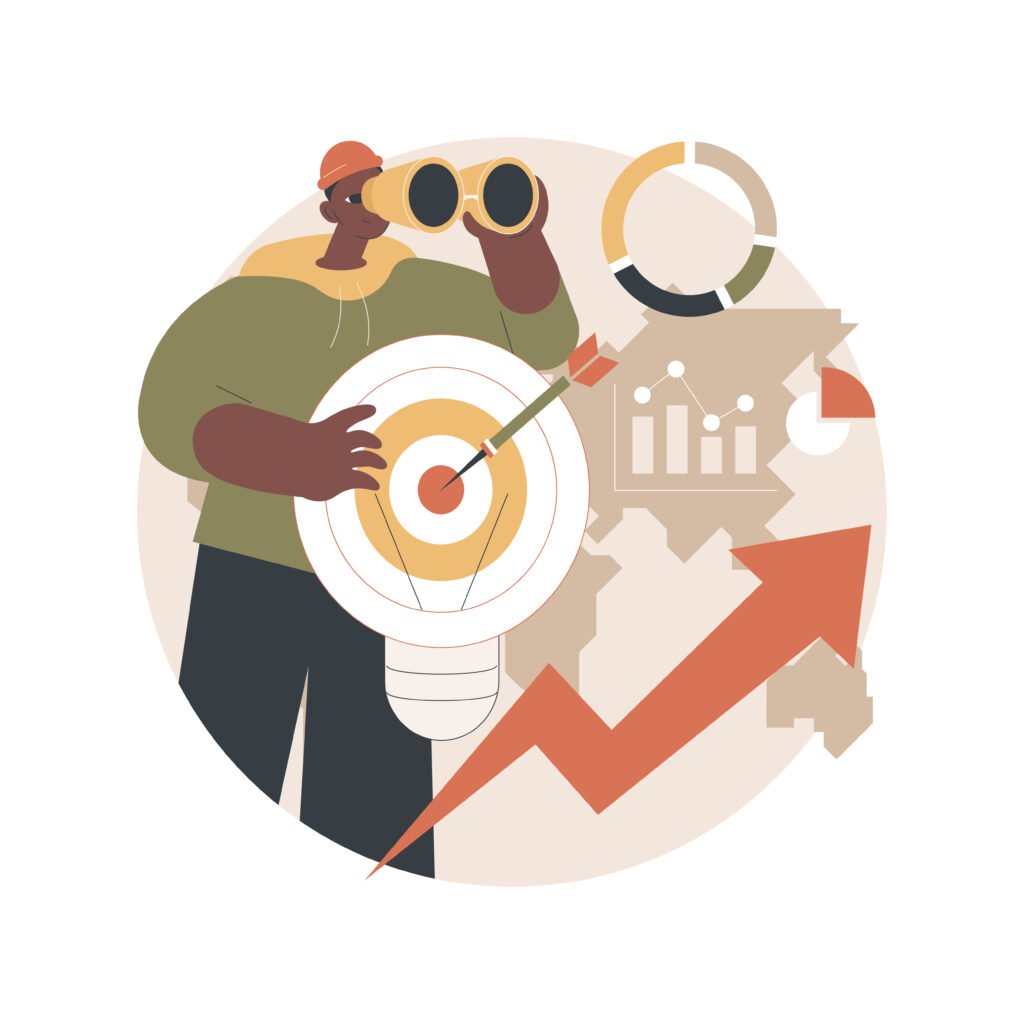Importance of Machine Learning in Customer Analytics: Main Applications
4 Apr 2024
Igor Kelly

Research shows that the global behavioral analytics market is expected to grow from $427.3 million to $2.2 billion by 2026. To turn prospects into customers, marketers need to understand what they’re looking for, why they’re looking for it, how to offer it, and when that value transfer can happen.
Analyzing customers’ behavioral data across all channels allows businesses to discover new segments, identify specific preferences, provide proactive customer support, and better target campaigns and sales activities — and here is where machine learning comes into play.
In this article, we will uncover the transformative possibilities of machine learning in customer analytics and examine the ways businesses can utilize the power of ML to refine targeted marketing.
Overview of Machine Learning in Customer Analytics
ML-driven behavior analysis focuses on describing, understanding, predicting, and changing behavior. It typically processes various customer data such as demographics, transaction history, browsing behavior, and feedback. Machine learning in customer analytics utilizes algorithms to identify patterns, trends, and correlations in the data to predict future behavior or preferences, providing personalized recommendations and targeted marketing strategies, which enhances customer engagement and satisfaction compared to traditional methods.
From a Google study on machine learning in marketing, we know that top marketers invest more than twice as often as other marketers invest in machine learning. This fact alone shows how important machine learning is in marketing. What specific advantages does machine learning in customer analytics offer for the company’s marketing strategy?
- Customers, their needs, and their development within the customer journey are understood more precisely than ever.
- Future behavior, purchases, or customers’ interests can be precisely predicted and proactively served with campaigns.
- Critical patterns and problems can be identified in a timely manner with data-driven insights, and strategic decisions can be made quickly.
The faster and more precise these ML-driven analyses are, the better the company can:
- Reach the responsible consumer: The perspective consumer is networked, research-oriented, and well-informed. The best way to reach them is to approach them as precisely as possible — and that requires extensive analysis of the customer life cycle.
- Create a connected Martech ecosystem: IoT, wearables, augmented reality/virtual reality, voice-controlled devices, and cameras with computer vision capabilities represent new inputs and data sources for behavioral data collection.
- Determine product range and offer: Pricing is one of the most important success factors when introducing a new product. The better it goes, the more tragic the inventory would be. Reliable demand forecasts are necessary here to enable optimal assortment and inventory planning.
- Maximize operational efficiency: Real-time analytics are critical to customer experience enhancement. Therefore, good planning is required to avoid delivery bottlenecks and staff gaps as best as possible and to be able to resolve any problems as quickly as possible.
- Carry out targeted marketing campaigns: Historical transaction data provides an optimal basis for personalized marketing communication, for example, through individually designed flyers with items in a specific size or color. This type of personalization can optimize customer lifetime value (CLV).
- Reduce customer churn: Retaining existing customers is always more cost-effective than acquiring new customers. Therefore, customer churn prediction and targeted marketing campaigns are essential for customer loyalty.
This is why behavioral analysis is crucial for business development. Machine learning in customer analytics helps you attract new customers – known and unknown – and utilize existing customer profiling based on actual interactions.
The potential of ML in customer engagement optimization is enormous and constantly evolving. These technologies allow companies to gain a competitive advantage, optimize customer acquisition efforts, and deliver personalized experiences that drive more conversions. Adobe shared the following real-life cases of intelligent technology implementation:
- Campaign termination: a $1.7 million daily revenue increase primarily due to a campaign that had ended too early.
- Vendor error: 73% increase in cart abandonments due to a tag manager error that automatically removed certain products from the cart.
- Browser issue: 8% increase in cart abandonment associated with Chrome browsers. Correcting this issue resulted in an incremental increase in sales of USD 1.2 million per day.
- Coupon fraud: An 81% increase in orders was noted due to traffic from two large daily deal/coupon websites advertising fraudulent coupons for toiletries. These orders could be canceled.
- Industrial espionage: 200% increase in traffic caused by a bot/crawler created by the company’s main competitor to siphon content from their website for reuse. These IPs were blocked.
Machine Learning Methods for Segmenting Customers
As the software learns from existing data, it draws new insights from it. During customer behavior analysis, we can define the following criteria, for example:
- Customer structure: Customer characteristics (age, profession, gender, etc.)
- Customer life cycle: Which customer goes through which phase and how?
- Customer behavior: Buying behavior, reactions to campaigns, etc.
- Customer value: Top customer vs. inactive customer
Let’s examine the ML methods used to segment customers by behavior, demographics, and preferences.
- Clustering algorithms. Clustering algorithms like k-means and hierarchical clustering group customers based on similarities in behavior, demographics, or preferences. Machine learning in customer analytics facilitates targeted marketing campaigns. Clustering algorithms help generate personalized product recommendations based on past purchases and preferences, enhance the customer shopping experience, and increase sales.
- Decision trees. Decision trees recursively partition customer data based on attributes like demographics or behavior, enabling businesses to categorize customers into distinct segments for targeted customer retention strategies and personalized communication.
- Predictive modeling. Predictive models like logistic regression, random forests, or gradient boosting analyze historical data to predict future churn probabilities, enabling businesses to implement targeted retention initiatives and minimize customer attrition. By analyzing past behavior and preferences, predictive modeling forecasts the future CLV of individual customers, guiding businesses in allocating resources effectively and prioritizing high-value customer segments for personalized marketing efforts.
- Collaborative filtering. Collaborative filtering analyzes customer behavior and preferences to recommend products or services based on the preferences of similar customers within the same segment, enhancing the shopping experience and increasing customer satisfaction. By analyzing customer feedback and sentiments, collaborative filtering helps businesses understand customer preferences and satisfaction levels, effectively tailoring their products and services to meet customer needs.
- Neural networks. Neural networks learn complex patterns in customer data to segment customers effectively, enabling businesses to identify distinct customer segments based on behavior, demographics, or preferences for targeted marketing and personalized communication efforts.
All the methods above utilize deep learning techniques that analyze customer sentiment from various sources to gauge satisfaction levels. They also allow to identify areas for improvement in products or services. Overall, the pros of ML-driven segmentation include its ability to identify complex patterns and relationships in data more accurately and efficiently, leading to more precise targeting and personalized marketing strategies.
Churn Prediction and Retention Strategies with ML
Machine learning in customer analytics uncovers specific patterns in customer behavior, enabling the prediction of individual risk scores. Sophisticated algorithms analyze vast amounts of customer data, including demographics, transaction history, browsing behavior, and feedback. Through iterative learning, these algorithms identify complex patterns, correlations, and trends within the data that might not be immediately apparent to human analysts. These scores encompass general churn risk and can be customized for specific scenarios, such as delinquent churn («termination due to non-payment»).

When integrated into a CRM system, a churn prediction model provides daily risk scores for each customer, facilitating proactive measures to prevent termination. Here’s an overview of practical use cases of customer churn prediction in different industries:
- Streaming platforms: ML algorithms analyze viewing habits and engagement metrics to predict individual churn risk scores. By identifying subscribers at high risk of canceling their subscriptions, these platforms can offer personalized recommendations, exclusive content, or discounted subscription plans to incentivize retention, thereby minimizing churn rates and maintaining revenue streams.
- Finance services: ML models analyze transaction data and customer interactions to forecast churn risk, especially in cases of delinquent payments. By identifying customers likely to churn due to non-payment, financial institutions can implement targeted outreach strategies, such as payment reminders or personalized assistance programs, to mitigate losses and maintain client relationships.
- E-commerce: ML algorithms analyze browsing history, purchase behavior, and feedback data to predict individual churn risk scores. E-commerce platforms use these predictions to personalize marketing campaigns, offer discounts, or provide enhanced customer support to prevent churn and foster long-term customer loyalty.
In each case, if a churn prediction model is operationalized in a CRM system, a current risk score can be provided daily for each individual customer. These scores are the basis for regular or ad-hoc measures to prevent termination.
Marketers use data analytics services in the USA to build a tailored customer analysis system that, among other features, allows for identifying potential cross-sell and up-sell opportunities. Automated behavioral pattern recognition allows businesses to personalize interactions and provide customers with real-time support, which is crucial to keep customers coming back. The most widely used tools for that include:
- Chatbots: These ML-driven tools use natural language processing to engage with customers in real-time, providing instant responses to queries and guiding them through various stages of their journey, improving efficiency and accessibility.
- Virtual assistants: Powered by machine learning algorithms, virtual assistants simulate human-like interactions, assisting customers with scheduling appointments, making recommendations, and resolving issues, ultimately enhancing convenience and satisfaction.
- Natural Language Processing (NLP) for customer support: NLP tools utilize predictive modeling techniques to analyze and interpret customer inquiries, feedback, and sentiment from various communication channels. NLP-based communications enable businesses to understand customer needs better, personalize responses, and improve overall support quality and efficiency.
Of course, these are not all of the technologies available for advanced analytics needed to prevent customer churn. The choice depends on current business processes, available resources, and the level of training of the company’s employees to work with innovative tools.
Predictive Analytics With ML
Compared to manual methods, customer analytics using machine learning is better at handling uncertainty because it learns from data patterns, adjusts to changes, and gives more accurate forecasts. An aggregated, accurate sales plan augmented with data-driven insights takes individual CLV forecasting into account.
Here’s how customer analytics software predicts future customer value:
- Data collection: Experts «feed» the algorithms with relevant customer data, including past purchases, browsing behavior, demographics, and interactions with the website or app.
- Data preprocessing: This step involves cleaning collected data by removing inconsistencies, missing values, and outliers. This process transforms the data into a suitable format for analysis.
- Feature engineering: Depending on a business goal, marketers extract meaningful features from the data to use it to predict future customer value. These features may include customer demographics, purchase frequency, recency, average order value, and engagement metrics.
- Model selection: An appropriate machine learning algorithm for predicting customer value is based on the problem’s nature and the data’s characteristics. Common algorithms used for customer value prediction include regression, decision trees, random forests, and gradient boosting, as mentioned above.
- Model training: Train the selected machine learning model using historical data, where the input features are used to predict the target variable (e.g., future customer value). The model learns the underlying patterns and relationships in the data during the training process.
- Model evaluation and deployment: Evaluate the performance of the trained model using validation data to ensure its accuracy and reliability in predicting future customer value. Once satisfied with the model’s performance, deploy it to make predictions on new data, allowing businesses to identify high-value customers and tailor marketing strategies accordingly.
This process can be applied to any research activity in marketing to gain customer insights and allocate scarce resources efficiently.

Personalized Product Recommendations with ML
Personalized product recommendations are responsible for up to 31% of E-commerce sales. It’s no wonder that online selling businesses are increasingly relying on personalization. Through advanced algorithms such as collaborative filtering, content-based filtering, and neural networks, ML systems can identify patterns and similarities among users and products, thus contributing to a more precise target audience portrait.
Here are some examples of brands leading the way in ML-driven personalization that companies can learn from:
- Grammarly sends weekly individualized insights into its users’ writing behavior.
- Headspace uses a quiz upon registration to tailor the app’s content to the user.
- Starbucks‘ mobile app allows customers to personalize their drinks. The company also sends offers and rewards based on their purchase history.
- MTailor uses smartphone scans to create personalized clothing.
- Very recommends clothing based on weather forecasts.
To successfully integrate ML-powered product recommendations into your strategy, consider the following best practices:
1. Build trust and security:
- Clearly communicate how user data is collected, used, and protected, earning customer trust and compliance with privacy regulations.
- Implement robust security measures into data mining techniques to safeguard user data, minimizing the risk of breaches and enhancing customer confidence in your recommendation system.
2. Deliver comprehensive customer experience:
- Ensure that product recommendations complement other aspects of the customer experience, such as website navigation, customer support, and marketing efforts, to provide a cohesive and satisfying experience.
3. Continuous improvement:
- Continuously analyze customer behavior and feedback to update personalization algorithms and product recommendations, ensuring relevance and effectiveness in meeting evolving customer preferences.
- Monitor market trends and shifts in customer preferences to adjust recommendation strategies accordingly, maintaining alignment with customer needs and expectations over time.
Overall, personalization is no longer just a «nice-to-have» for businesses, but rather an essential step in being able to compete with large companies. Machine learning in customer analytics tools is becoming an indispensable assistant for companies that strive to implement personalized product recommendations.
As a Footnote
Smart ML algorithms allow you to delve deeper into customer data and uncover new insights that would remain hidden using traditional BI tools. Customer analytics using machine learning allows you to make data-driven decisions by leveraging the following capabilities:
- Utilize ML-supported customer analysis answers to expand the product range
- Replace standard offers with targeted ones that are optimally tailored to the person or the habits and expectations
- Better evaluate newly generated leads based on industry, company size, previous purchasing behavior, and other relevant data
- Focus sales activities on the most valuable audience at each stage of the sales funnel
However, ML alone is not enough to make sales successful. he solution should be customized, taking into account the audience, metrics, goals and specifics of a particular business, rather than standard off-the-shelf tools — and Lightpoint will happily become your technological partner on this journey, from ideation to post-go-live support. Schedule a call with our team to conceptualize and estimate a customer analytics solution, tailored to your specific business needs.